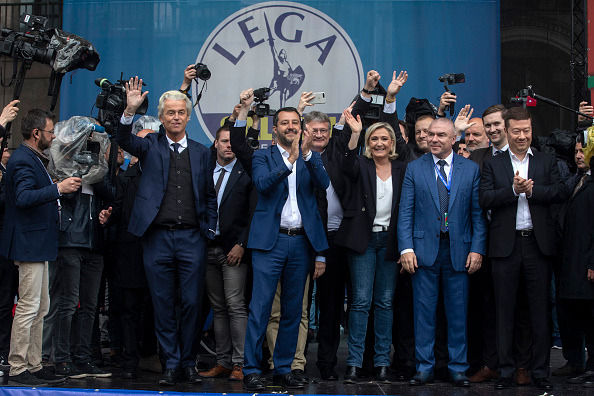
| Austria | Denmark | France | ||
| Belgium | Estonia | Germany | ||
| Czech Republic | Finland | Italy |
With the highest voter turnout in two decades (50.5%), the recently held European parliamentary elections were clearly viewed with special importance by Europe’s citizens.[1] The outcome was marked by considerable losses of the center factions in the European Parliament, to the benefit of the liberals and greens on the one hand, and a strengthened far right, which has gathered under a new banner, on the other. This shift becomes most visible when looking at the broader coalitions in the European Parliament, the so-called parliamentary or political groups.
Once Members of the European Parliament (MEPs) are elected by way of national votes for a range of national parties and their candidates, in most cases they subsequently join one of the roughly one dozen European political parties. These “Europarties” can, but are not required to, join larger factions, the parliamentary groups, which may comprise national parties, European parties, as well as independent MEPs. At least 25 MEPs from seven EU countries are necessary to apply for an official group status, and thus become eligible of EU funds.
Of the current eight parliamentary groups, covering the whole political spectrum, the two biggest lost each approximately one quarter of their voter base: the center-right European People’s Party (EPP) and the center-left Progressive Alliance of Socialists and Democrats (S&D), together forfeiting over a 100 seats of the 751 seats making up the EU Parliament.
While the biggest share of these losses benefitted another centrist group, the liberal Alliance of Liberals and Democrats for Europe (ALDE), which saw an increase from 67 to 113 seats, a large share also went to the left and right periphery. On the left, the biggest beneficiary was the Greens–European Free Alliance (Green/EFA) group that enlarged from 50 to 76 seats. The far-right “black block” on the other side, despite numerous predictions, was not growing as markedly as anticipated, but saw considerable changes amongst its affiliated parties and groups.
Two far-right European parties, the Alliance of European National Movements (AENM) and the Alliance for Peace and Freedom (APF), were already de-registered in the course of the last legislature, failing to meet the quota requirements. Furthermore, a new far-right parliamentary group, Identity & Democracy (I&D), initiated by Italy’s Deputy Prime Minister, Matteo Salvini, and chaired by Marco Zanni, will supersede the far-right group that had been dominant in the last parliamentary legislature, Europe of Nations and Freedom (ENF).
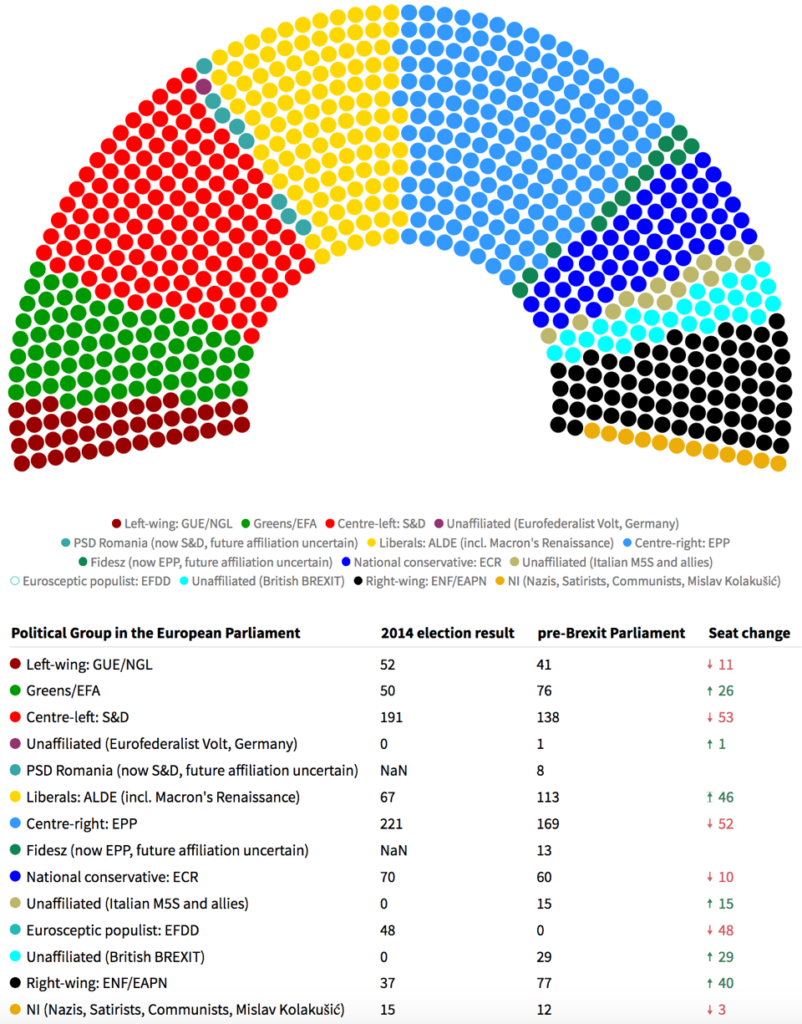
With only 37 members, the ENF, launched by the French Marine Le Pen, had constituted the smallest political group in the last EU term, and had for a large part comprised members of Le Pen’s party National Rally (Rassemblement National, RN).
With 73 seats, I&D will constitute the biggest far-right group the EU Parliament has seen so far, equaling approximately 10% of all MEPs, and is still in a neck-and-neck race with the Green/EFA faction as to which will be the fourth biggest group in the EU Parliament.
Although details are scarce about the background of the group’s creation, there are indications that it can be considered a “friendly takeover” by Salvini and his Lega (League) party rather than an attempt by the ENF to revamp itself.
For example, Le Pen had hesitated to announce her accession to I&D at first, potentially to see if Salvini could gather enough allies to meet the quota requirements for forming a new EU group.[2] All this, while being aware that some of the national parties which had made up her parliamentary group ENF would join I&D, and thus endanger the ENF’s group status.
Another possible indication of a friendly takeover was Le Pen’s willingness to make fundamental strategical concessions. For example, just days prior to RN’s official acceding to I&D, Le Pen had renounced her support of “a ‘Frexit’ in favor of reforming the European project from the inside.”[3] This shift can be considered a deviation from a hitherto prominent schism within the European far-right between EU-secessionists and EU-reformists in favor of the latter.
It is unclear why Le Pen’s former allies have turned away from her, the most eminent far-right figure in the European Parliament, ever since she had succeeded her father Jean-Marie Le Pen in 2011 as RN leader. Their main motives may have been Le Pen’s inability to consolidate the far right in the European Parliament in her 13 years as MEP, and the fact that her party RN never made it into a ruling government; much in contrast to the League, which under the leadership of Matteo Salvini was catapulted to the political forefront, having reached a staggering 34.33% in the recent EU elections, compared to a mere 6.2% in 2014.
In total, 15 far-right national parties from across Europe have pledged support for the I&D in the run-up of the European elections, but not all of them could gather enough votes for a seat, a prerogative for an official membership in a European parliamentary group.
This article will mostly explore the nine national far-right parties, which could obtain enough votes for one or more seats, based on the European Parliament’s official election results.[4] These include in descending order: Italy’s League (28 seats), France’s National Rally (22 seats), the Alternative for Germany (11 seats), the Austrian Freedom Party and the Belgian Flemish Interest (3 seats each), the Finns Party, the Czech Freedom and Direct Democracy (2 seats each), the Danish People’s Party, and the Conservative People’s Party of Estonia (1 seat each).

Among the six right-wing parties who have failed to pass the national threshold are the Bulgarian Volya party (3.60%), the Latvian Nationalists (0.67%), the Dutch Party for Freedom (3.5%), Slovakia’s We Are Family (3.23%), the Slovenian National Party (4.01%), Portugal’s National Renovator Party, (0.49%) as well as the Maltese Patriots Movement (0.3%), which will only be peripherally discussed here.
All in all, the recent election results constitute a further erosion of the cohesion in Europe that had been held together by centrist parties. They can be considered the outcome of the center’s failure to solve the growing economic, political, and ecological problems in Europe, and show a profound crisis of the post-war democratic consensus, which had essentially developed in the field of tension between the various center parties.
The far right has always been working towards the destruction of the centrist forces, for it will not be able to take power without a weakened center. Now that such a scenario seems plausible, and in light of the fact that far-right parties have established themselves firmly in several European countries and around the globe, the European far right sees that its time has come to embark on a major offensive.
Whether it might succeed in the short run is questionable, since non-far-right factions also profited from the center’s losses. But the dangers that come with a further strengthening of the black block should at no point be underestimated.
Firstly, the far right will not provide any solutions to the pressing issues that Europe is facing—from the consequences of climate change, over increasing precariousness, to geopolitical trouble spots as far as the eyes can see. Upon closer inspection, most far-right parties pledge for less climate protection, tax cuts for the rich, increased military budgets and inner-state surveillance, and often hold severely antagonizing stances when it comes to foreign policy.
Instead, the far right has developed a set of tools to divert working class anger, first and foremost by channeling it into fear of outgroups, be it of immigrants, Muslims, or LGBTIQ people, leading to increased racial, religious, and gender-related discrimination.
Another tool became the pledge for “Direct Democracy,” a new catchphrase of the far right to mask its ruthless assault on both democratic principles of representative democracy and, more specifically, the legitimacy of the centrist political parties which have held power in Europe since the end of WWII. The far right is now eagerly soliciting restless and immature far-left groups to ally with it in its assault on the center, whereby the battle cry of Direct Democracy plays a major role in this “horseshoe” scheme: to destroy the center from the periphery.
A prominent example is the current government coalition in Italy between the far-right Lega party and the “neither left nor right” 5-Star-Movement (Movimento 5 Stelle, M5S), whose main imperative has been Direct Democracy. If it was not for M5S’ landslide victory in the last general elections, the Lega would have never come into power. Another “cross-front” proponent that explicitly supports the concept is the French Yellow Vests movement, which is currently destabilizing France.
Amongst the right-wing to far-right proponents peddling Direct Democracy are the I&D-affiliated Czech party Freedom and Direct Democracy, Nigel Farage’s parliamentary group Europe of Freedom and Direct Democracy,as well as some of its national member parties, but also influential extra-parliamentary individuals such as Alt-Right pundit Steve Bannon.
Austria
With 17.2% of the national votes, the right-wing to far-right Freedom Party of Austria (FPÖ) fared rather well, despite a scandal around former Vice Chancellor Heinz-Christian Strache, which led to the end of the coalition government between the FPÖ and the Austrian People’s Party under Chancellor Sebastian Kurz just days prior to the European parliamentary elections. The FPÖ will hold three seats in the European Parliament, whereby Strache, who won the vote for a seat as well, kept open the question of whether he will actually take on his mandate as MEP.[5]
The aforementioned scandal broke loose when a video filmed with a hidden camera was leaked that showed Strache and his party colleague Johann Gudenus making swooping promises of lucrative state contracts in return for illegal party donations, and furthermore revealed a clandestine party funding scheme via FPÖ-affiliated associations.[6]
In the course of the government dissolution, Federal President of Austria Alexander Van der Bellen dismissed all FPÖ ministers, with the exception of the independent Foreign Minister, Karin Kneissl, even though the latter was appointed by the FPÖ.[7] The FPÖ had managed to get control of at least four ministries, including the Foreign, Defense and Interior Ministries, where the party had reportedly employed right-wing extremists, particularly from the Identitarian Movement, according to an investigation by the NGO SOS Mitmensch.[8]
Austria is currently led by a provisional government of experts, headed by constitutional judge Brigitte Bierlein, which will govern the country until new elections in September 2019. The September elections will most likely see Sebastian Kurz of the center-right Austrian People’s Party becoming Chancellor again, since according to recent polls he appears as the most favored candidate for the post.
Despite the FPÖ’s ousting from the Austrian government, it is doubtful that the video leak will have considerable long-term effects on the popularity of the FPÖ, or a marked shift in the near-term balance of power in Austria.
The extra-parliamentary far right, including dueling fraternities as well as nationalist groups, such as the Identitarian Movement, will have a continued influence on Austria’s politics.
Although only 0.4% of Austrians are fraternity members, 20 of the 51 FPÖ politicians of the former National Council were members of völkish fraternities, according to the Documentation Archive of the Austrian Resistance, “a record in the history of the Second Republic [of Austria established in 1945].”[9]

The FPÖ also fosters close relationships with the Identitarian Movement. An investigation “identified at least 48 Freedom Party politicians and employees with links to Generation Identity.”[10] The Austrian Identitarian Movement, which recently made headlines for having received donations by the Christchurch shooter Brenton Tarrant, does not make a secret of its support for the FPÖ. Just prior to the May elections, the Movement’s leader, Martin Sellner, prompted its members on social media to vote for Strache: “Take Revenge: #votestrache.”[11]
Not even the interim government could eliminate the power of the fraternity coterie and its connections to far-right organizations. For example, the new Minister of Transport, Andreas Reichhardt, took part in paramilitary exercises in Kärnten in the late 1980s together with Heinz-Christian Strache,[12] organized by the far-right extremist group “Family Circle of Youth Loyal to the People” (Familienkreis Volkstreue Jugend) with connections to the German neo-Nazi Viking Youth, the successor organization of the Hitler Youth.[13]
Belgium
The European elections in Belgium took place in a large-scale triple vote for the federal, regional, and European parliaments, with results mirroring the country’s historic regional divide. While right-wing to far right forces had swooping successes in Belgium’s northern Dutch-speaking region of Flanders, they did not achieve any noteworthy gains in the southern French-speaking Wallonia, nor in the metropolitan areas.
In the Flanders regional elections, the former ENF and now I&D member Vlaams Belang (Flemish Interest, VB) had a breakthrough that nobody saw coming. With 18.46% of the national votes compared to only 7.06% in the previous elections, VB became the second biggest party in the region.
VB’s swooping success led to slight losses of the ultra-conservative New Flemish Alliance (N-VA)—which, like Vlaams Belang, supports the separation of Flanders from the rest of the country—but with 24.9% nevertheless scored the highest vote share in the Flemish regional elections. The party’s president, Bart De Wever, said he would lead discussions to form a regional government together with VB in the near future.
VB has never been in a governing coalition, since centrist parties have a long-standing pledge—dubbed the “cordon sanitaire”—not to enter into a coalition with the party. Not surprising, given that VB roots in the Vlaams Blok, a far-right party active from 1979 to 2004, whose leaders made no secrets of their contact with, and veneration of, the infamous collaborationist SS colonel of the Walloon Legion, Léon Degrelle.[14]
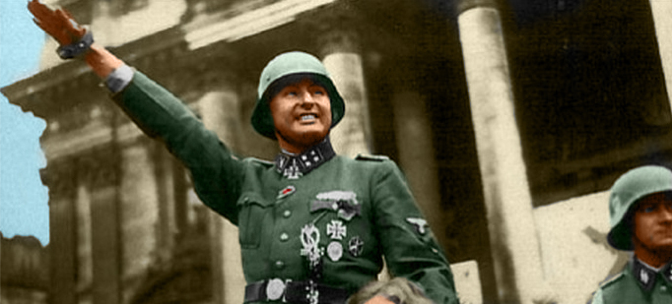
N-VA is the only party prepared to hold talks with Vlaams Belang. However, even if both of the parties could come to an agreement, their combined seats do not constitute a majority.[15] In the European elections, VB jumped from 4.26% to 11.45% (again behind N-VA with 13.47%), and will be sending three MEPs to the European Parliament.
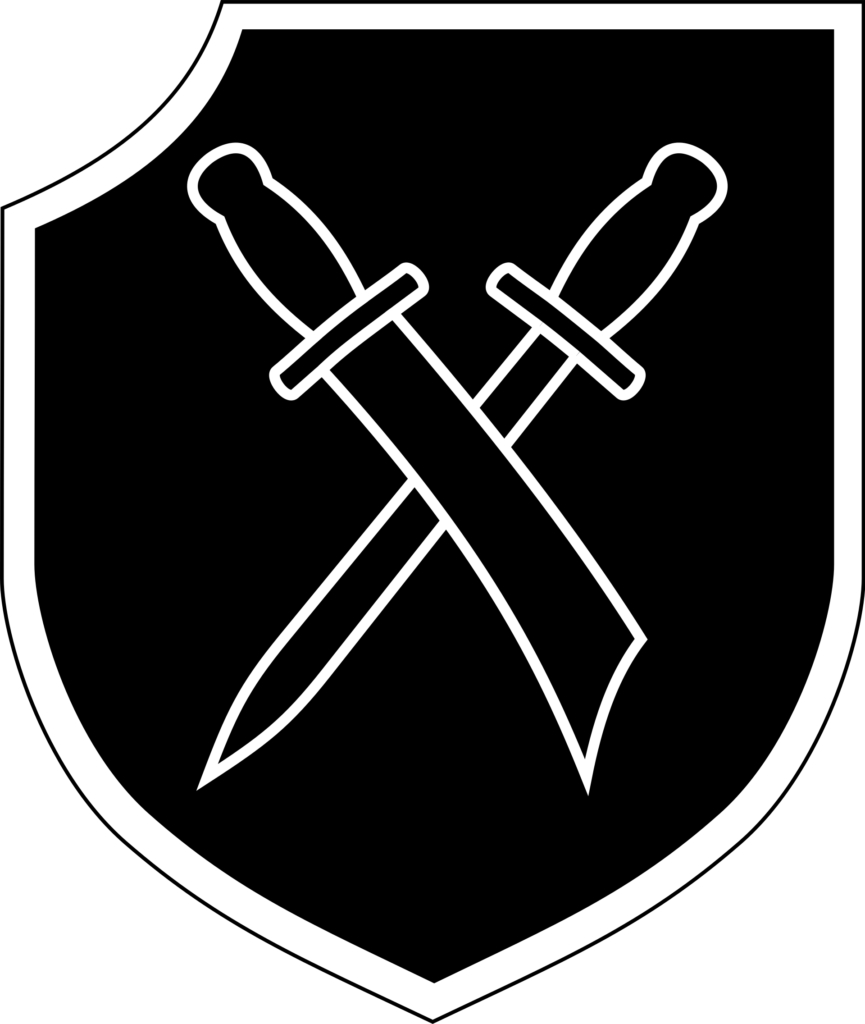
Walloon Legion
[Credit:https://en.wikipedia
.org/wiki/Walloon_Legion]
VB’s recent successes may be at least partly explained by its exuberant social media expenditures. The party appears to be the biggest spender amongst European far-right parties when it comes to Facebook ads, having paid around €707,000 to the platform.[16] The amount appears unusually high for such a small party, considering that parties such as Lega or Fidesz spent a mere fifth of that amount.
Facebook’s ads library reveals a social media strategy that was focused on the final weeks of the election campaign, and mostly targeted young voters aged 18 to 34. The party, indeed, scored especially well with young, male voters[17]—a trend that had been spotted by pollsters ahead of the vote.[18]
The sudden focus on social media may be due to a leadership change within VB, now representing a younger generation. Between 2004 and 2014, a large part of its electorate shifted to the New Flemish Alliance, whose line on migration is tough but more moderate than Vlaams Belang’s. When VB suffered further losses in the “triple vote” of 2014, its historic leader Gerolf Annemans passed on the party leadership to the younger Tom Van Grieken. The generational change was furthered when in 2019 26-year-old Dries Van Langenhove became independent member of the Vlaams Belang group in the Belgian Chamber of Representatives. Van Langenhove had gained national prominence as a leader of an extreme right-wing youth movement called Shield and Friends (Schild Vrienden), which is part of the broader Generation Identity phenomenon.[19] Last September, an investigation by the Belgian public broadcaster VRT documented how Van Langenhove’s group was running blatantly anti-Semitic and racist online chatrooms on platforms such as Facebook and the gaming app Discord—flirting with neo-Nazi ideology and memes linked to the US Alt-Right movement.[20]
Notwithstanding VB’s successes in Flanders, it failed to gain ground in other parts of Belgium, i.e., in Wallonia and Brussels. Despite regular attempts, no extreme right-wing party has ever managed to establish itself there, rather the opposite: the green and left factions have been gaining ground as of late.
These differences can be attributed to several historical particularities of the two regions.[21] First, because of Wallonia’s and Brussels’ cosmopolitan and multicultural nature, nationalism has a harder time gaining ground. Second, Belgium’s social democracy developed during the “Trentes Glorieuses“ (1945–1975), in which trade unions, predominant in the French-speaking metropolitan areas, played a key role, and continue to have a strong influence on the political leaning in the region. A third factor concerns the wealth distribution: Wallonia has a considerable lower per capita GDP compared to Flanders, and lags behind it when it comes to “productivity, exports, income and employment.”[22] This has sparked discontent in many Flemish people, and a “rhetoric about one-way sponsorship,” much similar to the Catalonian rift, which adds to the existing discontent with the historic suppression of Flemish culture and language under a predominantly French-speaking elite, two central discourses of the Flemish far right.[23]
Czech Republic
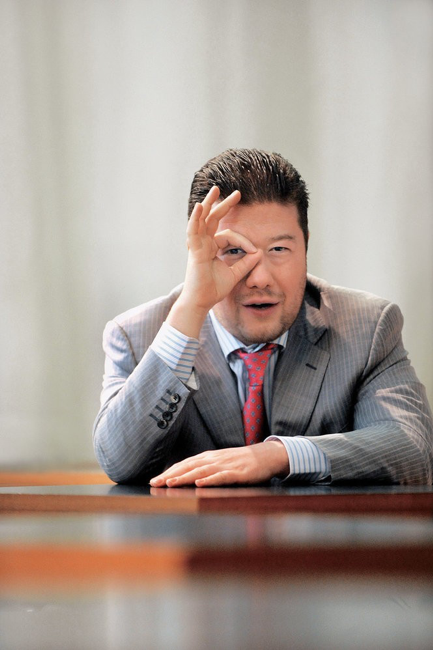
The hand position showing a W and P stands for White Power.
[Credit: reflex.cz]
The Czech party Freedom and Direct Democracy—Tomio Okamura (Svoboda a přímá demokracie – Tomio Okamura, SPD)—is a hard Eurosceptic, anti-immigration, and pro-direct democracy political party in the Czech Republic. The party holds 22 of the 200 seats in the Czech Chamber of Deputies, and could gain 9.14% of the national votes during the recent EU elections, equaling two seats in the EU parliament.
The SPD was founded in 2015 by Tomio Okamura and Radim Fiala after a number of MPs split from the right-wing populist party Dawn of Direct Democracy, which had fallen apart after two years, when Okamura was accused of having funneled party money to his own companies.[24]
The SPD was named in the style of the Eurosceptic EU parliamentary group Europe of Freedom and Direct Democracy (EFDD) led by Nigel Farage,[25] and subsequently also joined the group.[26] SPD leader Tomio Okamura stated in an interview on the party’s website that representatives of Farage had visited him twice in Prague for consultations beforehand.[27]
The party of entrepreneur Okamura, as other surging far-right populist parties in Europe, has used “a carefully crafted media strategy of marginalizing the country’s mainstream media in favor of his own social media channels that amplify fake news, including a strong anti-Brussels message.”[28] The SPD’s discourses, opposing an alleged Islamization of Europe, immigration, as well as a presumed “de-nationalization” campaign by the EU, all of which fall perfectly in line with the majority of its European allies.
The party also has links with France’s National Rally (formerly National Front) led by Marine Le Pen, who had actively endorsed the SPD before the 2017 Czech legislative election.[29] In December 2017, the SPD hosted a conference together with the EU party Movement for a Europe of Nations and Freedom (Mouvement pour une Europe des Nations et des Libertés, MENL) in Prague. The MENL was subordinated to the now defunct Europe of Freedom and Nations parliamentary group, which were both dominated by the French National Front under Le Pen at the time. Besides the SPD and the National Front, the conference entitled “For a Europe of Sovereign Nations”[30] brought together parties such as the Dutch Party for Freedom, the Freedom Party of Austria as well as Italy’s League, now all I&D members.[31]
This approximation to the ENF was probably a strategic move given the uncertainty concerning the future of Farage’s EFDD group after Brexit, which may dissolve in the course of this legislature. But it should also serve as a reminder of the flowing transition between ENF and EFDD despite the latter’s vehement demarcation to the far-right.
Denmark
With 10.76% of the national votes, equaling one seat in the European Parliament, the far-right Eurosceptic Danish People’s Party (Dansk Folkeparti, DF) fared rather badly. It lost over half of its voter base compared to the 27% of the national votes it had received in the 2014 European elections, and to the 21% of the votes in the 2015 general election.
Formerly affiliated with the right-wing European Conservatives and Reformists (ECR) group, DF can be considered a particular “brown-red” blend, characterized by a hardline nativist and anti-immigration stance on the one hand, and a center-left agenda when it comes to welfare policies or the educational system. The party existed since 1995 but had its breakthrough when Kristian Thulesen Dahl took over the leadership of the party in 2012.
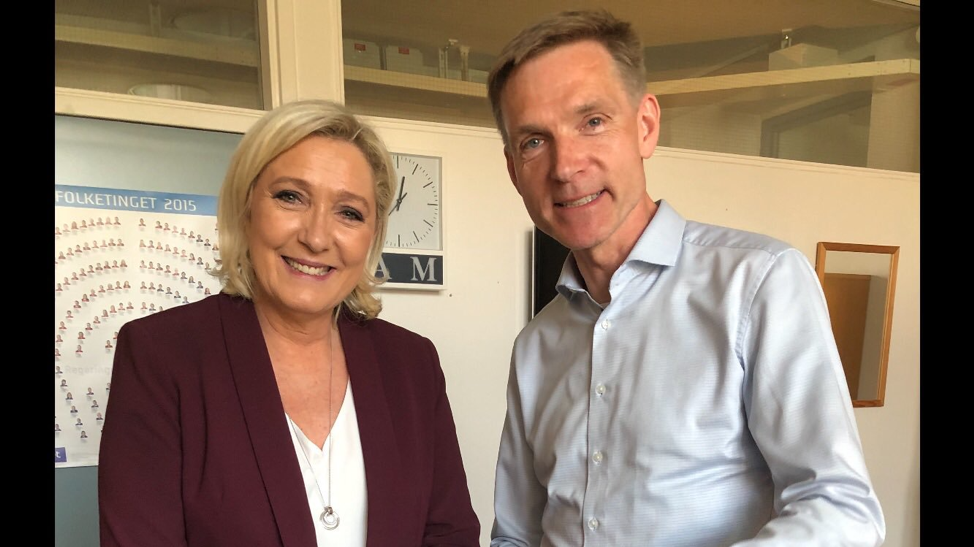
Analysts have presented several reasons why the party has lost so many votes. While immigration has been the topic that had made the party popular in recent years, public opinion seems to have changed by now. While formerly the number one political issue of the Danes, it has been superseded by environmental concerns, and has dropped to the fourth place in the national priority ranking.[32]
Another reason why the DF fared badly can be ascribed to the establishment of new far-right parties in the meantime that are splitting the nationalist vote. Amongst them, the radical party Hard Line (Stram Kurs) led by Rasmus Paludan, intending “to ban Islam and deport all Muslims from Denmark,”[33] which could score approximately 1.8% in the June 5 national elections. Another newcomer, the New Right party, is expected to pass the 2% threshold.[34]
Furthermore, the center-left Danish Social Democrats (Socialdemokraterne) could snatch a part of DF’s voter base, by also taking a hardline stance on immigration.[35] In the national parliamentary election on June 5, the Danish People’s Party has even further fallen to a mere 9.0%, the lowest vote share ever since the party’s creation.[36]
Estonia
In the 2019 European elections, the Conservative People’s Party of Estonia (EKRE) scored 12.7% of the national votes, and thus one seat in the upcoming EU Parliament: a surprising result considering it could gather only 4% in the 2014 EU elections.
In the last national election in March 2019, EKRE won 19 seats in the country’s 101-seat parliament, nearly tripling its vote share compared to the national elections in 2015. Its real victory came a few weeks later, when it was included in the three-party coalition government, and couldsecure the leadership of five key ministries, including the Interior Ministry, now headed by the party’s founder Mart Helme, and the Finance Ministry, which will be led by his son, Martin Helme.[37]
EKRE was founded in 2012 as a result of a merger between a nationalist party led by Martin Helme and an agrarian center-right party to which his father once belonged. Three years later, in 2015, it had already gained seven seats in the Estonian Parliament after the government had passed a law allowing same-sex couples to register as partnerships. Timing played in the party’s favor: two months later, in May 2015, Donald Trump announced his candidacy, and Britain voted to leave the EU the following spring. Estonian voters were “encouraged by the fact that we are not some freak phenomenon, that this is a global trend,” according to Helme.[38]
Martin Helme adheres to tropes globally trending amongst the far right, such as the “Great Replacement” theory, which is the idea that, due to the negative demographics in Europe, immigrants would be purposefully imported by elites in order to maintain their profits, and over the short- or long-term supersede the native white population. For example, he stated in 2013 that a large influx of migrants would lead to the “pillaging and raping” of Estonian towns.[39]
Helme and his father, Mart, are also known for having flashed the OK symbol when they were sworn in as government ministers,[40] a gesture associated with White Supremacists.[41] The symbol seems widely used among EKRE members. Ruuben Kaalep, a member of Sinine Äratus, the youth branchof EKRE, was photographed doing the same sign with Marine Le Pen in May 2019, when she was meeting EKRE’s leadership two days ahead of the formal I&D kickoff event in Milan.[42]

Even though since 2015 Estonia has taken in a limited number of refugees (206 refugees, 80 of whom have reportedly left the country since), Helme still managed to drum up anti-refugee sentiments by tapping into the controversy related to last year’s UN Global Compact for Migration, falsely claiming that it would lead to an influx of 7 million refugees.[43] Party leaders also rallied against an alleged influx of cheap labor from former Soviet Union countries, such as Belarus and Ukraine.[44]
Finland
With 13.8% of the national votes, the right-wing populist Finns Party (Perussuomalaiset) has received just 1% more than in the previous EU parliamentary elections, and will dispatch two MEPs to the Identity & Democracy group.
Founded in 1995 as a successor to the agrarian Finnish Rural Party, the Finns Party had experienced a massive popularity increase between 2007 and 2011, when the party’s vote share went up from 4.05% to 19.05% in the Finnish parliamentary election, although its European election results have always lagged considerably behind.
The landslide increase has been mainly attributed to a change of the party’s rhetoric at the time, starting to include both right-wing as well as left-wing discourses. It has been speculated this approach may have presented a more attractive form of criticism of the neoliberal policies which had gnawed on the Finnish welfare state in recent years than the one proposed by the country’s political left.[45]
But considering the Finns Party’s ethno-nationalist bend, marked by cultural authoritarianism, the party may in some aspects rather fit the far-right denomination than the right-wing populist tag. These manifest themselves, for example, in demands such as teaching “healthy national pride” in schools, striking off the Swedish–Finnish bilingualism from the agenda, or subsidizing traditional over postmodernist art.
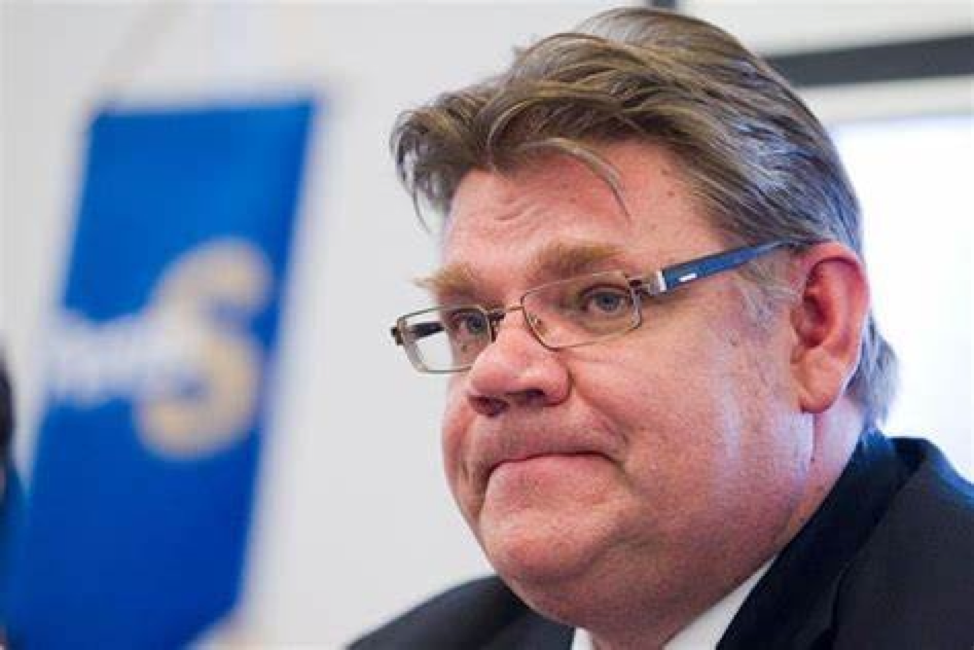
The Finns Party had until the recent national elections been in a governing coalition with the liberal conservative Centre Party and the center-right National Coalition Party. It was the first time in Finland’s history that a far-right party had participated in a ruling government. The coalition immediately embarked on drawing up a series of far-reaching reform plans, including the restructuring of the country’s national healthcare system and other social services. The failure to enforce these plans, which had been declared unconstitutional, have ultimately led to the coalition’s demise.[46]
Just prior to the European elections Finland had held national elections, after which the coalition government dissolved, with the Centre Party having received its lowest voter share in over 100 years. Coalition talks between the Social Democrats, the Centre Party, the Green League, the Left Alliance and the Swedish People’s Party were successful, and the cabinet under Antti Rinne was inaugurated in June 2019.[47]
Finnish nationalists are particularly influenced by white-supremacist groups, such as the Nordic Resistance Movement (NRM), a pan-Nordic neo-Nazi movement spread over Sweden, Norway, Finland, Denmark, and Iceland that wants to create a white-only Scandinavia. In Sweden, the NRM has been labeled a terrorist organization because it advocates abolishing democracy and is known for its paramilitary activities, including the creation of weapons caches.
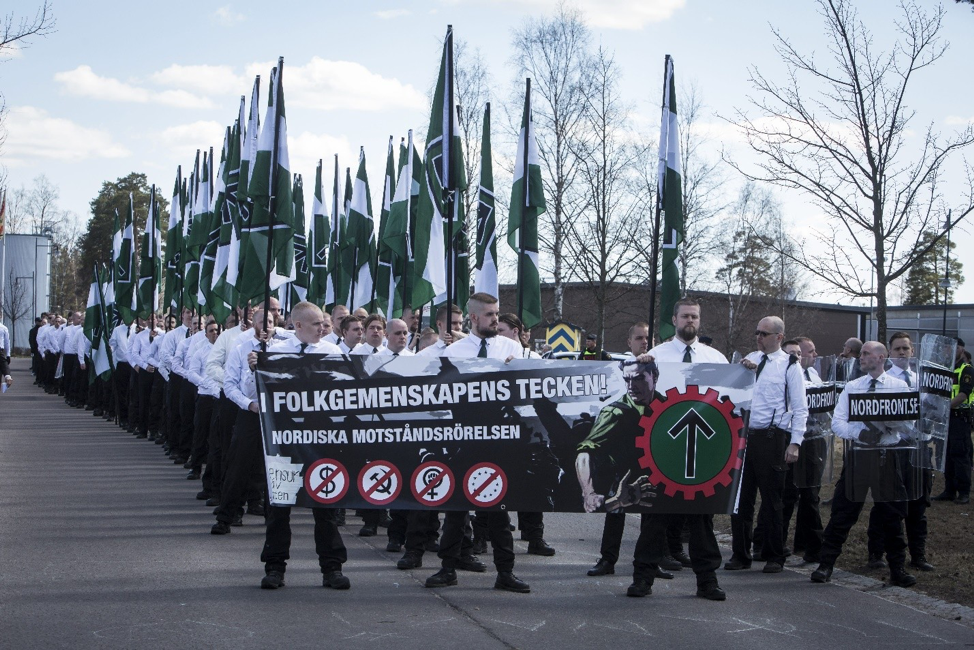
The Finnish Resistance Movement (Suomen Vastarintaliike), currently led by Antti Niemi, is the Finnish branch of the NRM, known for its militant actions, such as attacking anti-racism and gay pride demonstrations.[48] In November 2017, the NRM was banned in Finland, but the movement has filed an appeal that was granted by the Finnish Supreme Court in March 2019.[49] The NRM will remain banned until a final verdict has been returned, but the movement has already announced that it would start a political party if it lost the case.[50]
France
The EU election results of the French far-right National Rally (Rassemblement National, RN) are only marginally worse than in 2014 (23.31% compared to 24.86%), and speak of a stable voter base, as well as a geographical consistency of the vote.[51] The party came in first in the Ardennes and Haute-Marne regions, the heart of RN’s electorate, but otherwise did not succeed in attracting new voters, particularly in cities, which had already shown little support for the party in 2014.
With 22.41% of the voter share, president Emmanuel Macron’s center party, La République En Marche (LREM), fell just short of the RN. Analysts blame the bad results partly on the mobilization of protest voters, which are assumed to be responsible for the sharp increase in the voter turnout, from 42.43% in 2014 to 50.12% in 2019.
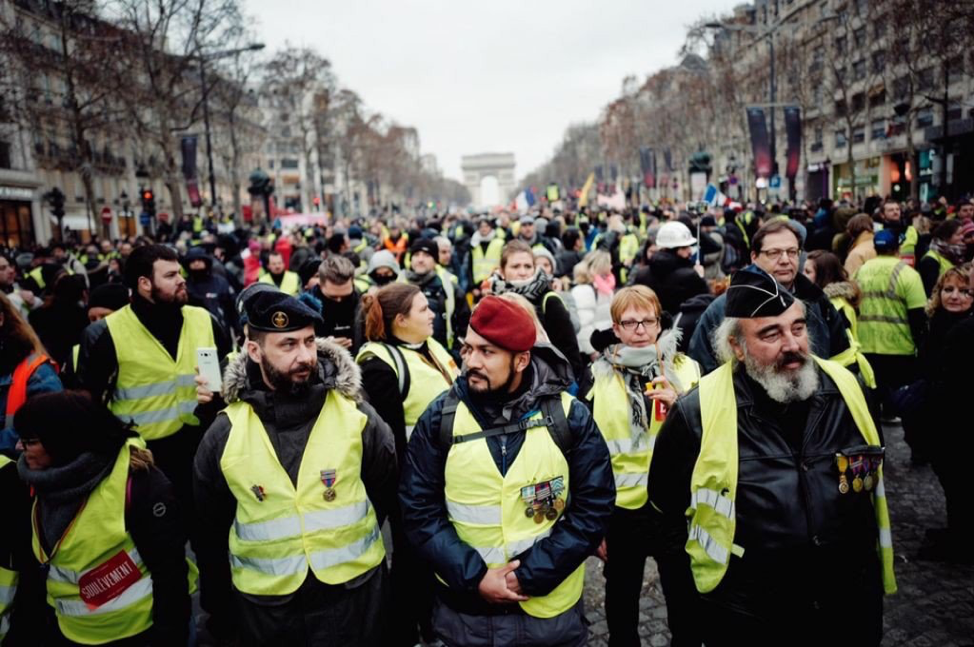
The main opposition forces, the extreme right, but also Jean-Luc Mélenchon’s left-wing La France insoumise and the cross-front “Yellow Vests” (Gilets Jaunes) movement had organized a protest vote (vote utile) against Macron. The President’s negative comments, i.e., on the unemployed, on “Gauls who are resistant to change,” on journalists who are too critical, or on welfare beneficiaries sucking the population dry, have obviously stayed in the mind of voters, as a Mediapart report notes.[52] The purpose of this protest vote was to prevent Macron from leading the European elections—even if it meant favoring the RN—and calling for the dissolution of the government, which RN leader Marine Le Pen promptly did the day after the elections.[53]
It has been speculated that RN had profited particularly from the votes of the ostensibly catch-all Yellow Vests movement that is currently destabilizing France with massive and partly violent weekly demonstration, demanding a whole range of policy changes to alleviate the growing precariousness experienced by France’s lower and middle classes.
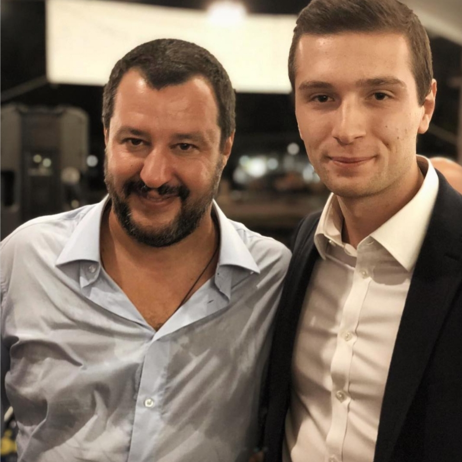
Although principally “neither left nor right,” the Yellow Vests may have a disproportional far-right bend, at least according to an Ipsos survey conducted on the eve of the election. Of the 5,433 people questioned, 44% of those who stated they were “very close” to the Yellow Vests said they would vote for RN’s list of MEP candidates, led by 24-year-old Jordan Bardella.[54]
Others blame the president’s strategy in dealing with the far right for RN’s continuing strength. One of the main discourses of Macron’s European campaign pointed to a split between “progressives vs populists” as a new distinctive political criterion,[55] which dramatized the contest between LREM and the RN. Critics purport this development played into the hands of RN, since it had put the party at the center of the political theater.
Nonetheless, Macron’s electoral victory had jumbled the French political landscape, which was dominated for more than 40 years by the Republicans (Les Républicains) on the right, and the Socialist Party (Parti Socialiste) on the left side—and his efforts to impose a centrist government can overall be considered successful.
Germany
The 2019 EU elections indicate a considerable shift in the German political landscape. While both of Germany’s center parties, the Social and the Christian Democrats, experienced strong losses, the Green Party, with 20.50% of the votes, emerged as the biggest winner.
Scoring 11% of the votes, the right-wing to far-right Alternative for Germany (AfD) performed worse than anticipated, attributable to the party’s ongoing donation scandals, the inability to purge the leading cadre from of racist elements, as well as inner-party power struggles.
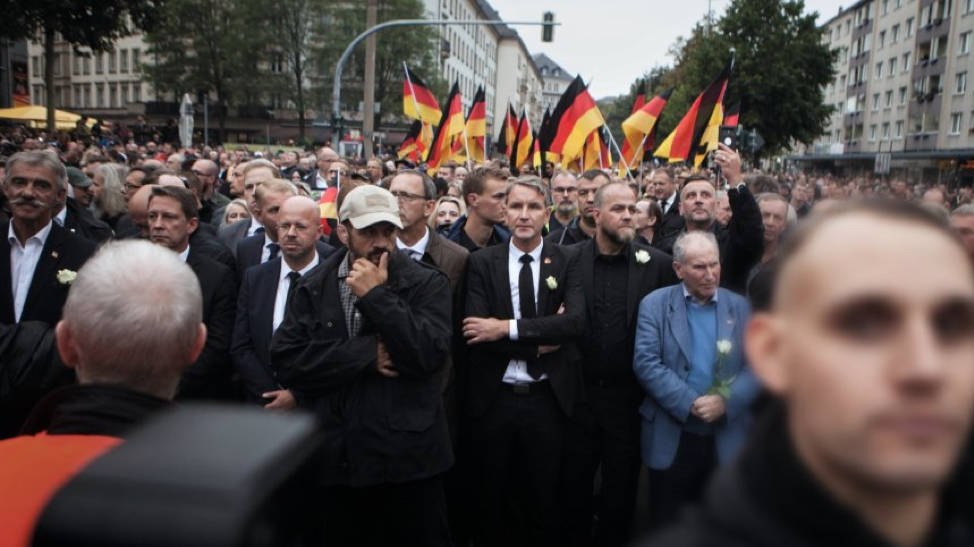
The AfD was founded in April 2013 by a group of right-wing Eurosceptics and moderate populists, but since the rise of the nationalist inner-party grouping called “The Wing” (Der Flügel) in 2015, the party has made a pronounced shift towards the extreme right.[56] Openly racist, anti-Semitic, and historical-revisionist statements are now common among many of the party’s politicians and leaders, including national-socialist concepts and terminology.[57]
Formerly allied to Farage’s group, Europe for Freedom and Direct Democracy, the party has now pledged its 11 seats to I&D, and will be the third biggest national party in the group.
Support for the AfD shows considerable deviations when it comes to factors such as age, gender, and regions.[58] Amongst young voters, the AfD could score a mere 6 percent, a tendency that can also be discerned among the center parties. And while 13% of men voted for the AfD, only 7% of the women gave their vote to the party.[59] The strongest deviations concern regional factors: While in most of Germany the AfD had rather low results, it became the strongest force in the Eastern German regions of Brandenburg (19.9%) and Saxony (25.3%).[60]
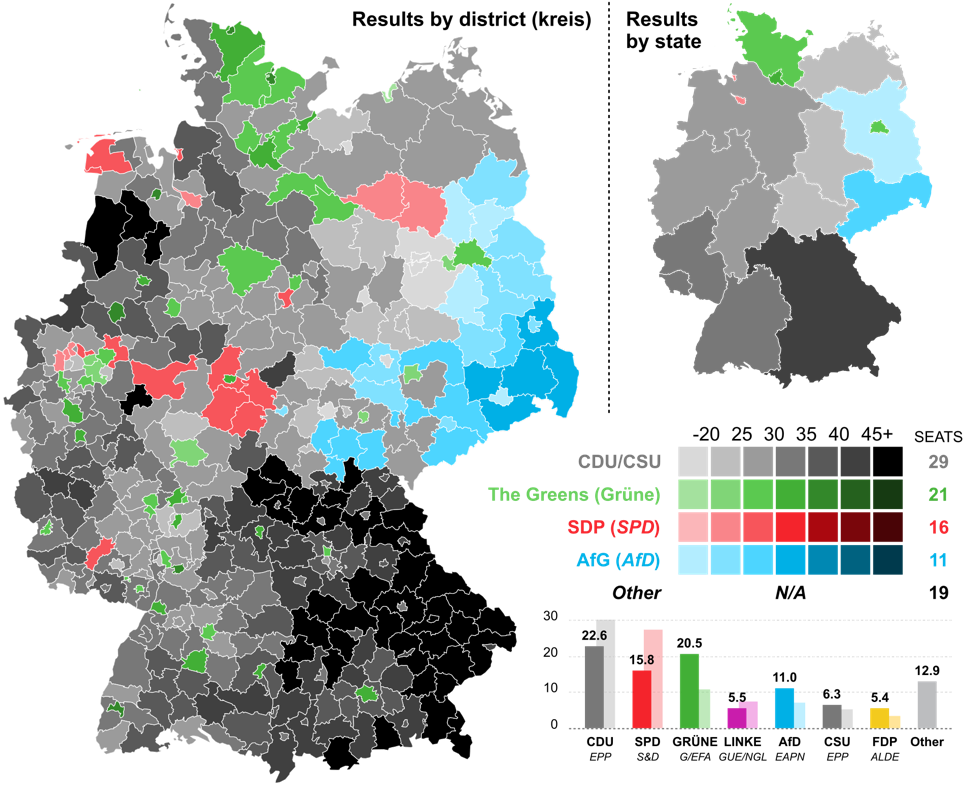
Partly responsible for the rejection of the center-left to far-right parties by a majority of young people was a viral video that had appeared just days before the election, and has triggered a broad social debate. A young German YouTube star called Rezo published a video entitled “The destruction of the CDU [Christian Democratic Union]” which went viral in a matter of days, and, since its publication on May 18, has been watched over 15 Million times.[61]
The 55-minute video, accompanied by 247 scientific references and citations, accused the governing “grand coalition” between the Christian and the Social Democrats and other mainstream parties of a plethora of shortcomings: their inactivity when it comes to an ecological turnaround, making politics for the rich, as well as contributing tointernational conflicts by way of supporting military interventions and allowing for massive weapons exports into conflict zones. Rezo had also explicitly warned against voting for the AfD, as the party would “make the world only worse.”
The CDU has ever since been in full crisis mode. The party’s leader Annegret Kramp-Karrenbauer, has announced political consequences to the “attack,” stating that the party will try to find legal ways of impeding campaigns of influencers ahead of future elections, much to the dismay of many, who see the move as a rummaging in the authoritarian tool box against freedom of expression.
The bad election results for both center parties had a sort of card house effect. The leader of the Social Democrats, Andrea Nahles, stepped down because of the historically low election result for the party (15.8%),[62] a move that puts the grand coalition in real danger.
Post-election surveys indicate that the Green Party is by now in a neck-to-neck race with the CDU for the strongest party in the government, with up to 27% of the national votes.
The current mood in Germany does not indicate a further expansion of the AfD, particularly because of its antagonistic stance on ecological policies, which are trending nationally. The AfD’s current climate program is only half a page long, in which it denies humanly accelerated climate change, and the findings of the IPCC.[63]
Italy[64]
If it were not for the recent swooping successes of Italy’s right-wing to far-right League (Lega) as of late, the Identity & Democracy group would have most certainly not have seen the light of day. Although around since the early 1990s, and initially mainly preoccupied with demanding independence of the Northern regions of Italy, the League has been on a success course ever since Matteo Salvini took over the leadership of the party, and deviated from the separatist line towards a nationalist agenda.
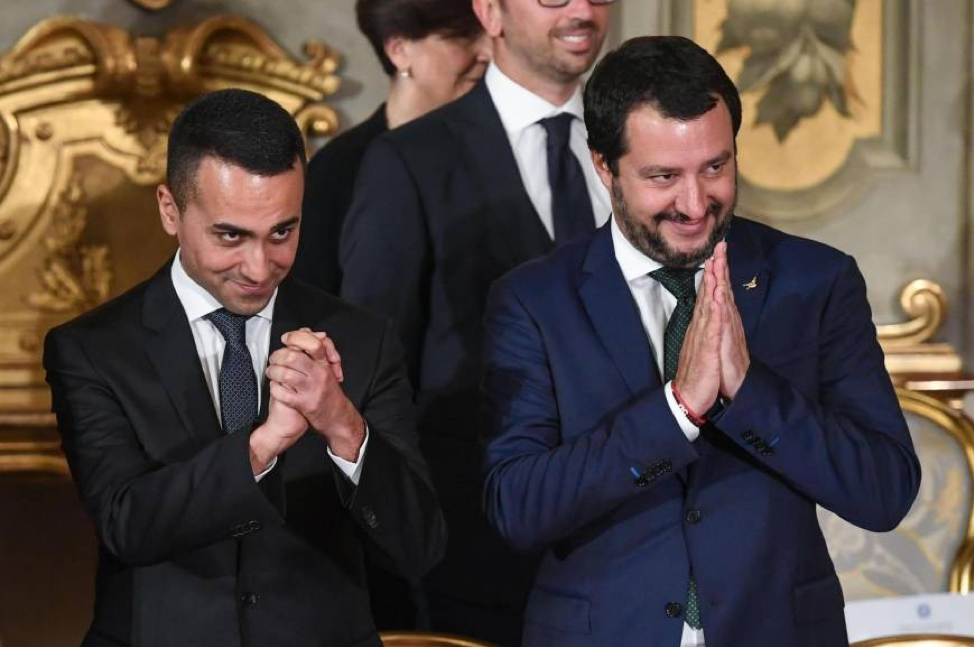
The League had its breakthrough in May 2018, when it formed a coalition government with Luigi Di Maio’s Five Star Movement (Movimento 5 Stelle, M5S), an anti-establishment initiative encompassing members from across all fronts, particularly those disillusioned by Italy’s political left.[65] M5S’ successes can be mostly ascribed to the party’s cutting-edge digital platform, with features such as online polls, petitions and proposals, giving the user the feeling of a more participatory democratic process.
Also at the European level, the M5S had put its weight behind a right-wing to far-right formation, when, during the last EU term, it joined the Europe of Freedom and Direct Democracy EU group, led by then UKIP leader Nigel Farage. M5S’ mastermind, Gianroberto Casaleggio, who died in 2016, had reportedly filled Farage in on details regarding M5S’ success formula.[66] What Farage dubbed the “Grillo model,” a corporate structure with a strong digital platform emphasizing Direct Democracy, he saw as the way forward for UKIP’s Brexit campaign, and subsequently the Brexit Party.[67]
Since Italy’s general elections of March 2018, the balance of power between the two governing parties has changed drastically. During the recent European elections, Matteo Salvini’s League won 34.3% of the vote and its coalition partner, the M5S, only 17.1%. Compared to the results obtained in the general elections a year earlier, the League’s vote share doubled, while support for the M5S halved.
This seesaw effect cannot solely be attributed to a diminished popular support of M5S and a growing popularity of the League, but also to disparities in the voter turnout, as well as certain particularities of Italy’s election law (see below).
Given that the League had performed much worse in the March 2018 general elections (17.35%), while there was a higher voter turnout (72.94%),[68] the party’s European election results, with only 54.50%[69] voter turnout, can be considered a less accurate reflection of the popular mood.
Another reason for the sudden disparity concerns Italy’s election law, in which the European elections are coinciding with regional elections in some municipalities, but not in others. Approximately 60% of the northern municipalities held two elections, compared to only 25% of those in the South. This led to a higher voter turnout in northern Italy, a circumstance that clearly favored the League, since the heart of Salvini’s electorate resides there.
Salvini’s course to transform the League from a regional into a national party seems to have fully worked out, since between 2018 and 2019, the League could multiply its voter base by a factor of 1.5 in the North, by 2 in Central Italy and by 3 in the south of the country and on the islands.[70]
To explain the success of Salvini’s campaign, political analysts often mention the impact of social networks. With his “spin doctor,” Luca Morisi, Salvini has developed the most powerful viral marketing machine in Italian politics, nicknamed the “Bestia,” a software that analyzes big data and information flows from social networks. With 3.6 million followers on Facebook, 1.4 million on Instagram, and 1.1 million on Twitter, Salvini leads the daily debate in mainstream media and politics.
One example of the striking power of Salvini’s social media presence is the case of the #chiudiamoiporti (#close the ports) campaign of June 2018: when a Mediterranean refugee rescue boat wanted to dock in Italian ports, Matteo Salvini refused its entry, and said it should be taken in by Malta instead.[71] Salvini reiterated his point by posting a picture of himself on social media alongside the hashtag #chiudiamoiporti,[72] and the Italian ports did indeed close their doors to the rescue boat, even though Salvini never issued a formal demand.
However, the role of social networks in Salvini’s success must be put into perspective.[73] His tweets or posts are intended to be picked up by the traditional media, in a country where television has long been the leading information channel. Their impact would be much less significant if television and the print media had not helped to popularize Salvini’s message.
Conclusion
While Identity & Democracy hoped in vain for a big shift to the right in the run-up to the EU parliamentary elections, it nevertheless succeeded in gathering a higher number of MEPs behind it than any other far-right group had managed so far. All in all, the right-wing to far-right political groups will occupy not more than approximately one quarter of the seats in the European Parliament.
Although I&D has not succeeded in bringing all the big players of the European far right into its fold, the non-accession of parties such as the Polish PiS party or Hungary’s Fidesz are a double-edged sword. While setting a limit to I&D’s overall membership, it allows for the reactionary influence of these parties to extend into to the less radical center-right to right-wing groups, the European Conservatives and Reformists (ECR), and the European People’s Party (EPP) respectively.
I&D could also not convince Brexit figurehead Nigel Farage to join the group, who declared he would try to maintain his own parliamentary group, Europe of Freedom and Direct Democracy (EFDD), until the UK’s final EU exit. Nonetheless, there are considerable overlaps when it comes to the discourses and the structure of both groups. Not only had the EFDD consisted to a large part of MEPs from Lega’s coalition partner M5S, but the group had also directly influenced the course of, for example, the I&D’s Czech affiliate, Tomio Okamura’s Freedom and Direct Democracy party.
From this perspective, the “branching out” of I&D into more moderate parliamentary groups could possibly be of great advantage, since its influence could bring the vote of a whole group around. It is also important to note that, eventually, voting behavior rather than political group alignment is the decisive factor when it comes to European parliamentary politics. And there has been the disturbing tendency that the center-right factions would line-up with the far right, for example, when it comes to decisions that are impeding major business or industry interests. Such has been the case recently when the ECR, the ENF, and the EFDD had almost unanimously voted against the change of energy efficiency standards in the European Parliament.[74]

This article is co-published with the Institute for European, Russian and Eurasian Studies (IERES) at George Washington University here and is the third paper of the IERES Occasional Papers series on the Transnational History of the Far Right. Previous papers published include: Imagined Geographies of Central and Eastern Europe: The Concept of Intermarium and Different Shades of Black: The Anatomy of the Far Right in the European Parliament.
[1]“Elections 2019: highest turnout in 20 years,” European Parliament, May 27, 2019, https://www.europarl.europa.eu/news/en/headlines/eu-affairs/20190523STO52402/elections-2019-highest-turnout-in-20-years.
[2]“France’s far-right National Rally joins Salvini’s European alliance,” Deutsche Welle, April 20, 2019, https://www.dw.com/en/frances-far-right-national-rally-joins-salvinis-european-alliance/a-48411442.
[3]Ibid.
[4]“2019 European election results,” European Parliament, https://election-results.eu/.
[5]Stephan Löwenstein, “Die Rückkehr des HC Strache?,” Frankfurter Allgemeine, May 28, 2019, https://www.faz.net/aktuell/politik/europawahl/europawahl-zieht-strache-ins-strassburger-parlament-ein-16211071.html.
[6]“Österreich: FPÖ löst nach Affäre um Ibiza-Video parteinahe Vereine auf,” Neue Zürcher Zeitung, May 25, 2019, https://www.nzz.ch/international/oesterreich-fpoe-loest-nach-ibiza-video-parteinahe-vereine-auf-ld.1484683.
[7]“Bundespräsident entlässt Kickl und alle anderen FPÖ-Minister – Nur Außenministerin Kneissl bleibt im Amt,” Der Standard, May 21, 2019, https://derstandard.at/jetzt/livebericht/2000103512365/tag-fuenf-der-regierungskrise-wie-es-nach-dem-abzug-der.
[8]Katrin Bennhold, “As Far Right Rises, a Battle Over Security Agencies Grows,” The New York Times, May 7, 2019, https://www.nytimes.com/2019/05/07/world/europe/austria-far-right-freedom-party.html?smid=nytcore-ios-share.
[9]“So national wird der neue Nationalrat,” Kurier, October 25, 2019, https://kurier.at/politik/inland/fpoe-und-die-burschenschaften-so-national-wird-der-neue-nationalrat/294.000.877.
[10]“Dossier zu Verflechtungen zwischen FPÖ und „Identitären“,” SOS Mitmensch, April 2019, https://www2.sosmitmensch.at/dl/pntnJKJKnolJqx4kJK/Dossier_Verflechtungen_FPOE_Identitaere_April2019_SOSMitmensch_.pdf.
[11]Twitter post by Martin Sellner, May 25, 2019, https://twitter.com/Martin_Sellner/status/1132354675221643264.
[12]Twitter post by former National Council member of the Austrian Greens, Albert Steinhauser, June 2, 2019, https://twitter.com/a_steinhauser/status/1135273012549304320.
[13]Leila Al-Serori and Oliver Das Gupta, “Die Akte Strache,” Süddeutsche Zeitung, October 10, 2017, https://gfx.sueddeutsche.de/apps/e563408/www/.
[14]Bénédicte Vaes, “Nazis sans frontières : les liens entre Degrelle et le Vlaams B.,” Le Soir, January 11, 2005, https://www.lesoir.be/art/%252Fnazis-sans-frontieres-les-liens-entre-degrelle-et-le-vl_t-20050111-Z0Q5FD.html.
[15]Laurens Cerulus, Hanne Cokelaere and Simon Van Dorpe, “Election treble spells trouble for Belgium,” Politico, May 27, 2019, https://www.politico.eu/article/belgium-election-results-analysis/.
[16]Gerald Gartner, “Wahlkampf auf Facebook: Rechte europaweit voran,” Politometer, https://www.addendum.org/politometer/kategorie/verwaltung/facebook-werbeausgaben-europaweit/.
[17]Laurent Cerulus, “Inside the far right’s Flemish victory,” Politico, May 27, 2019, https://www.politico.eu/article/inside-the-far-rights-flemish-victory/.
[18]Sven Ponsaerts, “Flemish boys vote right, girls green,” HLN, May 21, 2019, https://www.hln.be/nieuws/binnenland/vlaamse-jongens-stemmen-rechts-meisjes-groen~ac19f8e6/?referer=https%3A%2F%2Fwww.politico.eu%2Farticle%2Finside-the-far-rights-flemish-victory%2F.
[19]Julia Ebner, “Who are Europe’s far-right identitarians?,” Politico, May 4, 2019, https://www.politico.eu/article/who-are-europe-far-right-identitarians-austria-generation-identity-martin-sellner/.
[20]“The two faces of Shield & Friends: right-wing movement versus secret group full of racism, sexism and weapons,” VRT, September 5, 2018, https://www.vrt.be/vrtnws/nl/2018/08/31/pano-schild-vrienden/; “What do you have to do to become a ‘warrior’ or ‘veteran’ of Shield & Friends and what is the final goal?,” VRT, September 5, 2018, https://www.vrt.be/vrtnws/nl/2018/08/31/schild-vrienden-achtergrond/.
[21]Henri Goldman, “Brussels, Wallonia, where the extreme right does not exist,” Mediapart, June 1, 2019, https://blogs.mediapart.fr/henri-goldman/blog/310519/bruxelles-wallonie-ou-l-extreme-droite-n-existe-pas.
[22]Leo Cendrowicz, “How economics explains Belgium’s rifts,” The Brussels Times, June 6, 2019, https://www.brusselstimes.com/opinions/how-economics-explains-belgium-s-rifts/.
[23]Ibid.
[24]Filip Brokeš, “Meet the Czech-Japanese businessman turned anti-EU rightwing political star,” .coda, May 7, 2019, https://codastory.com/disinformation/czech-businessman-anti-eu-rightwing-political/.
[25]Lukáš Kňazovický, “Rozhovor Tomia Okamury pro EuroZprávy.cz,” SPD, June 2, 2015, https://web.archive.org/web/20170814055855/http://spd.cz/rozhovor-tomia-okamury-eurozpravy-cz/.
[26]Eliška Malínská, “Okamura a Fiala skončili v hnutí Úsvit, zakládají novou stranu,” iRozhlas, May 5, 2015, https://www.irozhlas.cz/zpravy-domov/okamura-a-fiala-skoncili-v-hnuti-usvit-zakladaji-novou-stranu_201505052145_mvydrova.
[27]Ibid.
[28]Filip Brokeš, “Meet the Czech-Japanese businessman turned anti-EU rightwing political star,” .coda, May 7, 2019, https://codastory.com/disinformation/czech-businessman-anti-eu-rightwing-political/.
[29]Mouvement pour une Europe des Nations et des Libertés, “Marine Le Pen supports Tomio Okamura, President of the SPD, member of the MENF,” YouTube video, October 19, 2019, https://www.youtube.com/watch?v=2QM5QkCyQzM.
[30]Mouvement pour une Europe des Nations et des Libertés, “Report of MENF meeting to Prague (16/12/2017),” YouTube video, January 15, 2018, https://www.youtube.com/watch?v=dmAHsSw1gak.
[31]Ian Willoughby, “Le Pen to appear at December event with Okamura in Prague,” Radio Praha, November 15, 2017, https://www.radio.cz/en/section/news/le-pen-to-appear-at-december-event-with-okamura-in-prague.
[32]Nick Rigillo, “Denmark’s Biggest Populist Party Takes a Beating in Latest Poll,” Bloomberg, May 21, 2019, https://www.bloomberg.com/news/articles/2019-05-21/denmark-s-main-anti-immigration-party-has-worst-poll-in-7-years.
[33]Anne Sofie Schrøder, “Rasmus Paludan: Meet the far-right leader who wants to deport all Muslims from Denmark,” Euronews, May 30, 2019, https://www.euronews.com/2019/05/30/rasmus-paludan-meet-the-far-right-leader-who-wants-to-deport-all-muslims-from-denmark.
[34]“Danish election LIVE: Denmark’s left set for victory as far-right loses out,” The Local, June 5, 2019, https://www.thelocal.dk/20190605/live-denmark-awaits-results-of-general-election.
[35]“Two decades of immigration curbs make Danish far-right mainstream,” France24, June 3, 2019, https://www.france24.com/en/20190603-two-decades-immigration-curbs-make-danish-far-right-mainstream.
[36]“Electoral History: Right-wing O (ECR/EAPN) 1998: 7.4% (13) 2001: 12.0% (22) 2005: 13.3% (24) 2007: 13.9% (25) 2011: 12.3% (22) 2015: 21.1% (37) 2019: 9.8% (Epinion exit poll).” See Twitter post by Europe Elects, June 5, 2019, https://twitter.com/EuropeElects/status/1136378980712497155.
[37]“Gallery: Jüri Ratas cabinet takes oath of office,” Eesti Rahvusringhääling, April 29, 2019, https://news.err.ee/934734/gallery-juri-ratas-cabinet-takes-oath-of-office.
[38]Evan Gershkovich, “Estonia joins the far-right club,” Politico, April 30, 2019, https://www.politico.eu/article/estonia-tallinn-joins-the-far-right-club-martin-helme-mart-helme-kersti-kaljulaid-populism/.
[39]“Conservative Politician: If You’re Black, Go Back,” Eesti Rahvusringhääling, May 29, 2013, https://news.err.ee/107416/conservative-politician-if-you-re-black-go-back.
[40]Palko Karasz, “Estonia Ministers’ Gesture Raises Fears of Support for White Supremacy,” The New York Times, May 1, 2019, https://www.nytimes.com/2019/05/01/world/europe/ok-gesture-white-power-estonia.html.
[41]White power symbol according to KnowYourMeme, a database of online trends. https://knowyourmeme.com/memes/ok-symbol-%F0%9F%91%8C.
[42]Tristan Berteloot, “Photo of Marine Le Pen with white supremacists in Estonia: ‘She couldn’t help but know,’” Libération, May 16, 2019, https://oeilsurlefront.liberation.fr/les-idees/2019/05/16/photo-de-marine-le-pen-avec-des-supremacistes-blancs-en-estonie-elle-ne-pouvait-pas-ne-pas-savoir_1727185.
[43]Laurens Cerulus and Eline Schaart, “How the UN migration pact got trolled,” Politico, January 3, 2019, https://www.politico.eu/article/united-nations-migration-pact-how-got-trolled/.
[44]“Economy should be a smart one, not based on slave labour, says EKRE leader,” Eesti Rahvusringhääling, April 9, 2019, https://news.err.ee/928453/economy-should-be-a-smart-one-not-based-on-slave-labour-says-ekre-leader.
[45]Jarkko Hakala, “Vaaliohjelmien aatteet hukassa,” Tampereen Yliopisto, March 18, 2011, https://aikalainen.uta.fi/2011/03/18/vaaliohjelmien-aatteet-hukassa/; “Tutkija: perussuomalaiset käyvät vaalitaistoon jytkyn raunioilta kuin ameebat,” YLE, April 10, 2015, https://yle.fi/uutiset/3-7921432.
[46]“Sipilä opts for right-leaning government,” Yle, May 7, 2015, https://yle.fi/uutiset/osasto/news/sipila_opts_for_right-leaning_government/7979421.
[47]“Finland’s new government: SDP, Centre dominate ministerial portfolios,” Yle, June 3, 2019, https://yle.fi/uutiset/osasto/news/finlands_new_government_sdp_centrecentre_dominate_ministerial_portfolios/10813034.
[48]“Researcher: Jyväskylä knife attack no surprise,” Yle, January 31, 2013, https://yle.fi/uutiset/osasto/news/researcher_jyvaskyla_knife_attack_no_surprise/6474410.
[49]“Finnish Supreme Court grants Resistance Movement’s appeal but implements temporary ban,” Nordic Resistance Movement, March 29, 2019, https://nordicresistancemovement.org/finnish-supreme-court-grants-resistance-movements-appeal-but-implements-temporary-ban/.
[50]Riku Roslund, Kaisu Jansson and Juha Rissanen, “Yle granskar: Så här har nynazisterna förberett sig på att föreningen kan läggas ner – planerar starta ett eget parti,” Yle, December 2, 2018, https://svenska.yle.fi/artikel/2018/12/02/yle-granskar-sa-har-har-nynazisterna-forberett-sig-pa-att-foreningen-kan-laggas.
[51]Fabien Escalona, “Le RN s’est stabilisé à un très haut niveau,” Mediapart, May 31, 2019, https://www.mediapart.fr/journal/france/310519/le-rn-s-est-stabilise-un-tres-haut-niveau.
[52]Lucie Delaporte, “In Yonne, the ‘useful vote’against Macron is making its way,” Mediapart, May 17, 2019, https://www.mediapart.fr/journal/france/170519/dans-l-yonne-le-vote-utile-contre-macron-fait-son-chemin.
[53]“European: Marine Le Pen calls on Emmanuel Macron to dissolve the National Assembly,” Europe1, May 26, 2019, https://www.europe1.fr/politique/europeennes-marine-le-pen-appelle-emmanuel-macron-a-dissoudre-lassemblee-nationale-3900967.
[54]This number, due to the small sample size and unknown factors such as the survey location, can merely serve as an indicator in how far the Yellow Vests are supporting the far right. One must also bear in mind that one YV out of two did not go to the polls, according to this survey. This number therefore refers to 44% of the 50% of Yellow Vests that showed up to the European elections. It is therefore difficult to suggest that the movement substantially fed the RN vote. Lucie Delaporte, “Yellow vests: why they are far from having all voted RN,” Mediapart, June 1, 2019, https://www.mediapart.fr/journal/france/010619/gilets-jaunes-pourquoi-ils-sont-loin-davoir-tous-vote-rn.
[55]Frédéric Saint Clair, “Progressisme versus populisme versus populisme ou l’escroquerie intellectuelle d’Emmanuel Macron,” Valeurs Actuelles, April 3, 2019, https://www.valeursactuelles.com/politique/progressisme-versus-populisme-ou-lescroquerie-intellectuelle-demmanuel-macron-105516.
[56]Website of Der Flügel, http://www.derfluegel.de.
[57]Joachim Scharloth, “Ist die AfD eine populistische Partei? Eine Analyse am Beispiel des Landesverbandes Rheinland-Pfalz,” Aptum, 2017, http://www.scharloth.com/publikationen/AfD_Scharloth.pdf.
[58]“Europawahl 2019: Die Ergebnisse aus Deutschland,” Der Spiegel, May 27, 2019, https://www.spiegel.de/politik/deutschland/europawahl-2019-alle-ergebnisse-aus-deutschland-im-ueberblick-a-1267860.html.
[59]Philipp Frohn and Lars Frensch, “Frauen wählen grün, Männer die AfD – Spannende Fakten zur Europawahl,” Handelsblatt, May 27, 2019, https://www.handelsblatt.com/politik/international/europawahl/wahlbeteiligung-alter-geschlechter-frauen-waehlen-gruen-maenner-die-afd-spannende-fakten-zur-europawahl/24384420.html.
[60]Rachel Loxton, “The winners and losers: Six things to know about the EU elections in Germany,” The Local, May 27, 2019, https://www.thelocal.de/20190527/the-winners-and-losers-six-things-to-know-about-the-eu-elections-in-germany.
[61]Rezo ja lol ey, “Die Zerstörung der CDU,” YouTube video, March 18, 2019, https://www.youtube.com/watch?v=4Y1lZQsyuSQ.
[62]“Sonntagsfrage Bundestagswahl,” wahlrecht.de, accessed June 6, 2019, https://www.wahlrecht.de/umfragen/.
[63]“The trace gas CO2 is not a pollutant, but an indispensable prerequisite for all life. The statements of the IPCC that climate change is predominantly man-made are not scientifically proven.” See: “AfD Wahlprogramm,” Alternative for Germany, https://www.afd.de/wahlprogramm/2.
[64]Cécile Debarge, “After Salvini’s triumph, the Italian government is pitching again,” Mediapart, May 21, 2019, https://www.mediapart.fr/journal/international/310519/apres-le-triomphe-de-salvini-le-gouvernement-italien-tangue-de-nouveau.
[65]Darren Loucaides, “Building the Brexit party: how Nigel Farage copied Italy’s digital populists,” The Guardian, May 21, 2019, https://www.theguardian.com/politics/2019/may/21/brexit-party-nigel-farage-italy-digital-populists-five-star-movement.
[66]Ibid.
[67]Ibid.
[68]Election results of the March 2018 Chamber of Deputies (Camera dei deputati) elections, Dipartimento per gli AffariInterni e Territoriali, Ministero dell’interno, accessed June 15, 2019, https://elezionistorico.interno.gov.it/index.php?tpel=C&dtel=04/03/2018&tpa=I&tpe=A&lev0=0&levsut0=0&es0=S&ms=S.
[69]“2019 European election results: Italy,” European Parliament, accessed June 15, 2019, https://election-results.eu/national-results/italy/2019-2024/.
[70]Riace and Lampedusa are among those municipalities in the South that have massively supported the League. In Riace, in southern Calabria, known for its mayor’s project to welcome refugees,the League won 30.7% of the vote, thus becoming the strongest political force. In Lampedusa, it obtained 45.85%, i.e., twice the votes of the Democratic Party (Partito Democratico – PD), whose candidate Pietro Bartolo,a prominentdoctor from Lampedusa, isdefending a clearly pro-migrant line.
[71]Angela Giuffrida, “Mediterranean rescue vessel crew keep migrants calm during standoff,” The Guardian, June 11, 2018, https://www.theguardian.com/world/2018/jun/11/mediterranean-rescue-vessel-ms-aquarius-migrants.
[72]Twitter post by Matteo Salvini, June 10, 2018, https://twitter.com/matteosalvinimi/status/1005860118959882241.
[73]“Come Matteo Salvini usa i social network,” Vice, June 22, 2018, https://www.vice.com/it/article/a3apka/come-matteo-salvini-usa-i-social-network.
[74]“Vote on Energy Efficiency,” VoteWatch Europe (registration required), last modified January 17, 2018, https://www.votewatch.eu/en/term8-energy-efficiency-draft-legislative-resolution-vote-commission-proposal-ordinary-legislative-procedu.html#/##vote-tabs-list-2.
CovertAction Magazine is made possible by subscriptions, orders and donations from readers like you.
Blow the Whistle on U.S. Imperialism
Click the whistle and donate
When you donate to CovertAction Magazine, you are supporting investigative journalism. Your contributions go directly to supporting the development, production, editing, and dissemination of the Magazine.
CovertAction Magazine does not receive corporate or government sponsorship. Yet, we hold a steadfast commitment to providing compensation for writers, editorial and technical support. Your support helps facilitate this compensation as well as increase the caliber of this work.
Please make a donation by clicking on the donate logo above and enter the amount and your credit or debit card information.
CovertAction Institute, Inc. (CAI) is a 501(c)(3) non-profit organization and your gift is tax-deductible for federal income purposes. CAI’s tax-exempt ID number is 87-2461683.
We sincerely thank you for your support.
Disclaimer: The contents of this article are the sole responsibility of the author(s). CovertAction Institute, Inc. (CAI), including its Board of Directors (BD), Editorial Board (EB), Advisory Board (AB), staff, volunteers and its projects (including CovertAction Magazine) are not responsible for any inaccurate or incorrect statement in this article. This article also does not necessarily represent the views the BD, the EB, the AB, staff, volunteers, or any members of its projects.
Differing viewpoints: CAM publishes articles with differing viewpoints in an effort to nurture vibrant debate and thoughtful critical analysis. Feel free to comment on the articles in the comment section and/or send your letters to the Editors, which we will publish in the Letters column.
Copyrighted Material: This web site may contain copyrighted material the use of which has not always been specifically authorized by the copyright owner. As a not-for-profit charitable organization incorporated in the State of New York, we are making such material available in an effort to advance the understanding of humanity’s problems and hopefully to help find solutions for those problems. We believe this constitutes a ‘fair use’ of any such copyrighted material as provided for in section 107 of the US Copyright Law. You can read more about ‘fair use’ and US Copyright Law at the Legal Information Institute of Cornell Law School.
Republishing: CovertAction Magazine (CAM) grants permission to cross-post CAM articles on not-for-profit community internet sites as long as the source is acknowledged together with a hyperlink to the original CovertAction Magazine article. Also, kindly let us know at info@CovertActionMagazine.com. For publication of CAM articles in print or other forms including commercial internet sites, contact: info@CovertActionMagazine.com.
By using this site, you agree to these terms above.
About the Author
Ellen Rivera is an independent researcher who specializes in the post-war German far right, with a particular focus on post-war anti-communist organizations. In the framework of her research provided for the George Washington University’s Institute of European, Russian, and Eurasian Studies (IERES), she has been studying the current links between proponents of the German and the Russian far right, mostly by means of extensive social network analyses and media monitoring.
Mascha P. Davis holds an MA in Sociology and Philosophy and specializes in the French and European far right, particularly the Identitarian movement.





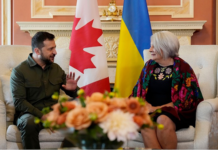
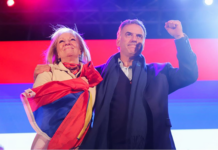

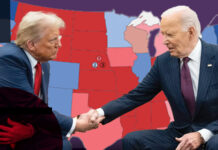
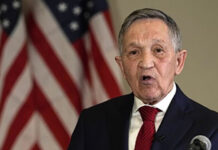
I’ll immediately grab your rss as I can’t to find
your email subscription link or newsletter service. Do you’ve any?
Kindly allow me recognise so that I may subscribe.
Thanks.
Howdy AdminI present to you: Google Local Raider – $5000 Or More Each Month Working With Local Businesses. Interested Or Not?Google Local Raider is a complete Google Guarantee business-in-a-box. Everything you need to start earning passive monthly commission check is provided in a done-for-you format including a detailed, no-fluff guide that walks through the entire process step by step.With these materials, you can help local businesses sign up Google Guarantee for improving their ranking in search results.With no hard selling or rejections BUT with complete formula to put in practice right away.MORE INFO HERE=> https://bit.ly/3eYg9l5